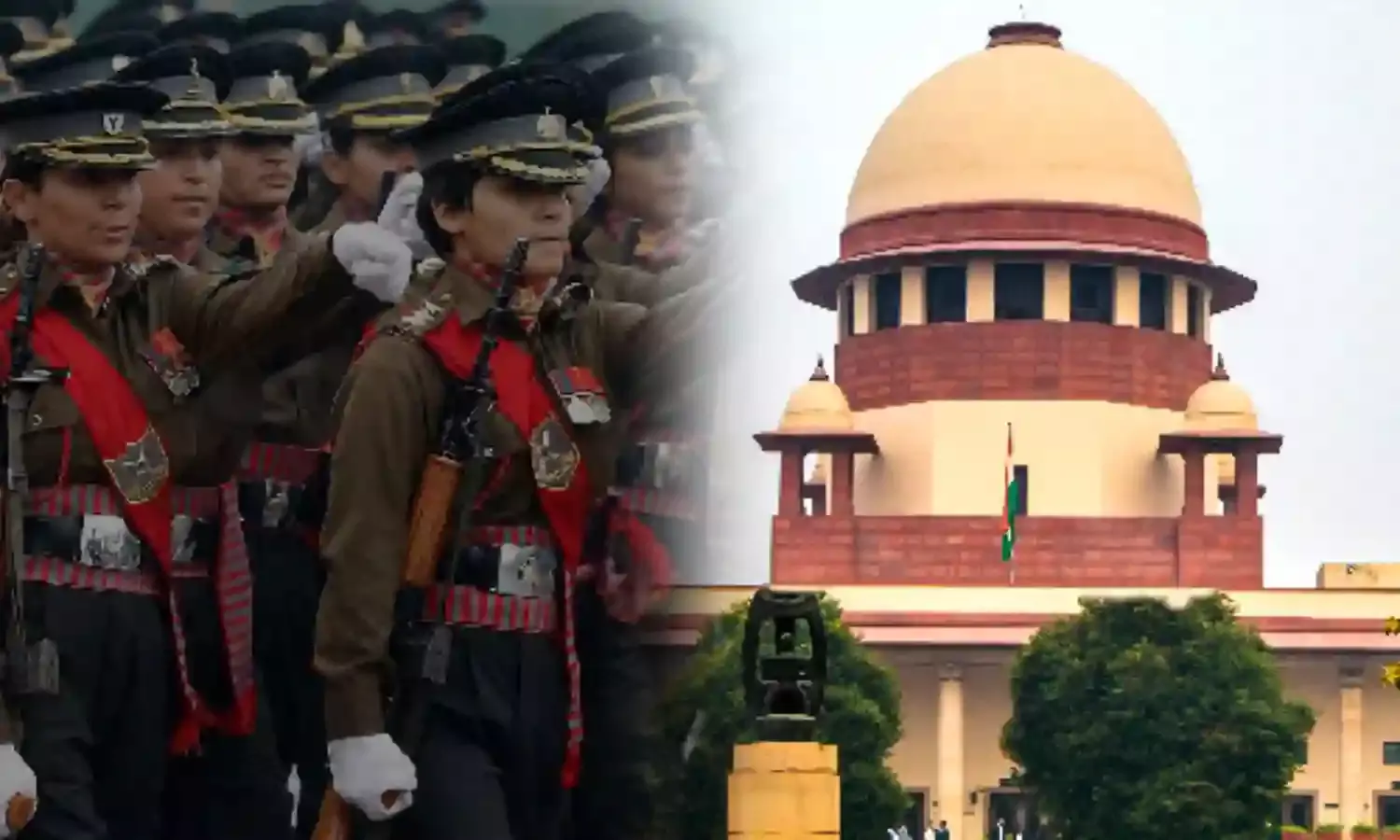Why Women Officers In Times Of Emergency Can’t Be Deployed For Counter-Insurgency Or Counter-Terror Forces? Supreme Court Asks
The Supreme Court said that the argument that women officers are not deployed for counter insurgency or in counter terror forces such as Rashtriya Rifles and Assam Rifles or are not attached to Infantry Units as they are not expected to discharge the role of combatants in case of armed conflicts has no legislative sanction/basis.

The Supreme Court while quashing quota policy for JAG (Judge Advocate General) branch, asked that why women officers in times of emergency cannot be deployed for counter-insurgency or in counter-terror forces.
The Court was hearing a Writ Petition in which the primary issue was whether the Centre after having issued a Notification under Section 12 of the Army Act, 1950 allowing induction of women in the JAG branch could have denied admission to other women candidates.
The two-Judge Bench comprising Justice Dipankar Datta and Justice Manmohan remarked, “It does not stand to reason that when women officers like Captain Ojaswita Shree of the elite Parachute Air Defence Unit, Major Dwipannita Kalita of highly specialised airbone medical unit of the Indian Army and Flight Lieutenant Shivangi Singh (Pilot of Rafale Jet) of the Indian Air Force can operate behind enemy lines with all expected risks, why women officers in times of emergency cannot be deployed for counter-insurgency or in counter-terror forces or attached to Infantry/Artillery Units.”
The Bench said that the argument that women officers are not deployed for counter insurgency or in counter terror forces such as Rashtriya Rifles and Assam Rifles or are not attached to Infantry Units as they are not expected to discharge the role of combatants in case of armed conflicts has no legislative sanction/basis.
Senior Advocate Gopal Sankaranarayanan appeared on behalf of the Petitioners while Additional Solicitor General (ASG) Aishwarya Bhati and Senior Advocate Rana Mukherjee appeared on behalf of the Respondents.
Court’s Observations
The Supreme Court in view of the above facts, observed, “There is also no restriction on appointment of women in departments in other Armed Forces which are ejusdem generis on the ground that these posts are combative in nature. In fact, the Air Force has continually opened new combat air force roles for women as fighter pilots, helicopter pilots, etc.”
The Court noted that the Indian Army entrusts women officers with complex tasks, such as transporting convoys of 30 to 50 vehicles through militant-prone areas in Leh, Srinagar, Udhampur and the North-East; for instance, Major Gopika Bhatti commanded a convoy from Leh to Pathankot in 2010, overseeing Junior Commissioned Officers and Jawans, managing logistics, arms, and ammunition.
“Women officers like Colonel Anshu Jamwal have also been actively involved in UN Peacekeeping missions since 2004, serving in combat zones like Syria, Lebanon, Ethiopia, Congo and Israel, further illustrating their capability to perform in high-risk, operational environments. Consequently, in the opinion of this Court, there exists no legal or operational bar, express or implied, that restricts deployment based on gender at peace locations”, it added.
The Court further said that if women candidates are more meritorious than men in the JAG entrance exam, then merit must be given a chance and if the women officers do not conform the discipline or match up to standards prescribed or expected of them, the Army shall be at liberty to act as they would with regard to the ‘errant’ or ‘inefficient’ or ‘unfit’ male officers in accordance with law.
“Consequently, the Respondents have failed to establish how a merit-based ‘gender-neutral’ selection process would negatively impact functionality, manpower planning, or operational efficiency of the JAG branch. On the contrary, a merit-based selection process will improve efficiency of the JAG branch”, it held.
The Court also observed that the executive cannot restrict the numbers of women and/or make a reservation for male officers under the guise of “extent of induction” by way of a policy or administrative instruction.
“Further, the impugned notification to the extent that it provides for only three (03) vacancies for female candidates as against six (06) vacancies for male candidates is against the concept of equality as enshrined in the Constitution as it makes a reservation for male officers under the guise of ‘extent of induction’, it said.
Conclusion
The Court remarked that though men and women candidates during the JAG selection procedure appear before separate boards, yet as the selection criteria and testing parameters of the fifteen (15) Officer Like Qualities are identical, combined merit list ought to be prepared.
“As Respondent No.3 despite having secured third rank with 433 marks in the merit list of men candidates has obtained less marks than the female candidate placed at Serial No.10 in the Females Merit List, this Court is of the view that his selection by the Respondents amounts to indirect discrimination and, therefore, he is not entitled to any relief”, it concluded.
Accordingly, the Apex Court disposed of the Writ Petition and directed the Respondent to henceforth conduct recruitment as well as publish a common merit list for all JAG candidates i.e., male and female and make the merit list public as well as the marks obtained by all candidates participating in the selection process.
Cause Title- Arshnoor Kaur & Anr. v. The Union of India & Ors. (Neutral Citation: 2025 INSC 954)


